Whether you live far from Dominque Ansel bakery, can’t justify the wait, or simply want bragging rights to all your friends and family, you can make Cronuts in your very own kitchen with a little patience and determination.
While this recipe takes up to 8 hours start to finish, much of it is down time easily filled by homework and/or Netflix marathons. It makes for a fun weekend project with a friend and an excellent challenge for the determined chef.
The resulting product will make all efforts seem worthwhile: a flakey and crispy Cronut dissolves in your mouth and is complete with homemade custard and plenty of extra glaze.
At-home Cronuts also allow for creativity. Dust them with cinnamon, add chai spices to your batter, top with fresh apple compte – the possibilities are exciting, endless and, most importantly, delicious.
If you aren’t feeling ambitious enough to make the croissant dough from scratch, a roll of pillsbury croissant dough will suffice, although the final product will not be quite as fluffy, delicious nor gratifying.
Prep Time: 6-8 hours
Cook Time: 15 minutes
Total Time: 6-8 hours
Servings: Makes 10-12 cronuts
Ingredients for the Cronut Dough:
1/2 cup warm water
1 package dry active yeast (2 1/4 teaspoons)
1 teaspoon salt
3 tablespoons sugar
1/2 cup milk
2 tablespoons melted butter
1 teaspoon vanilla extract
1 large egg
1/8 teaspoon nutmeg
3 1/2 cups flour, more as needed
12 tablespoons unsalted butter at room temperature
4-6 cups oil for frying (Dominque Ansel Bakery uses grapeseed oil; however, canola oil will also suffice for the college budget)
Ingredients for the Glaze:
4 cups confectioners sugar
4-6 tablespoons flavor of choice (lemon juice, lime juice, maple syrup)
or 1 teaspoon vanilla extract + 4 tablespoons water
Directions:
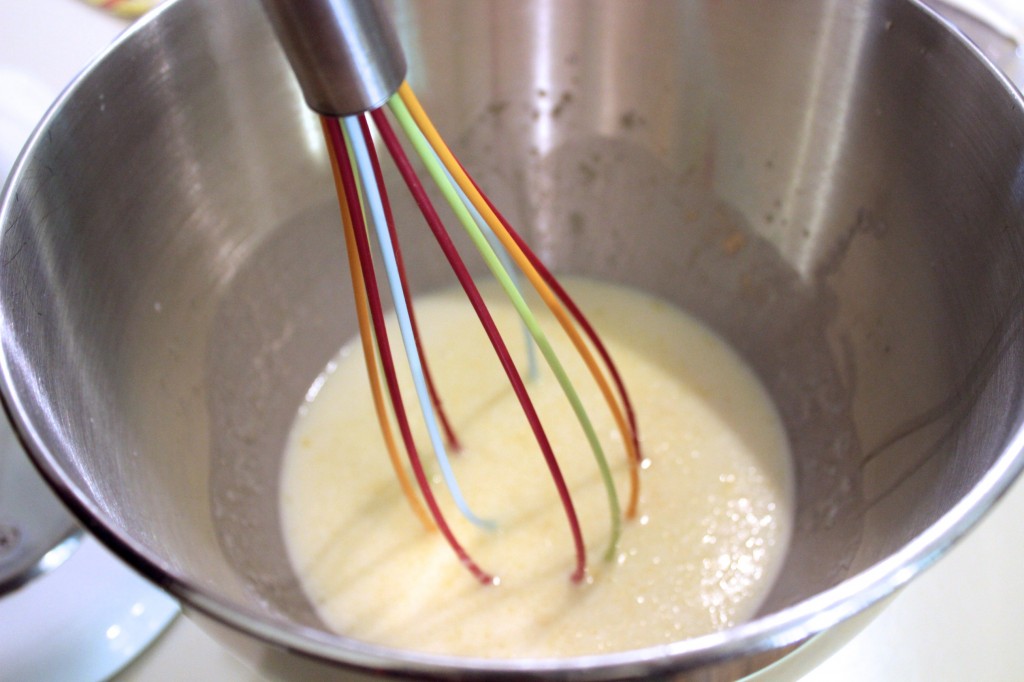
Photo by Katherine Baker
1. Combine yeast and warm water in a large mixing bowl and allow to sit for 5-10 minutes.
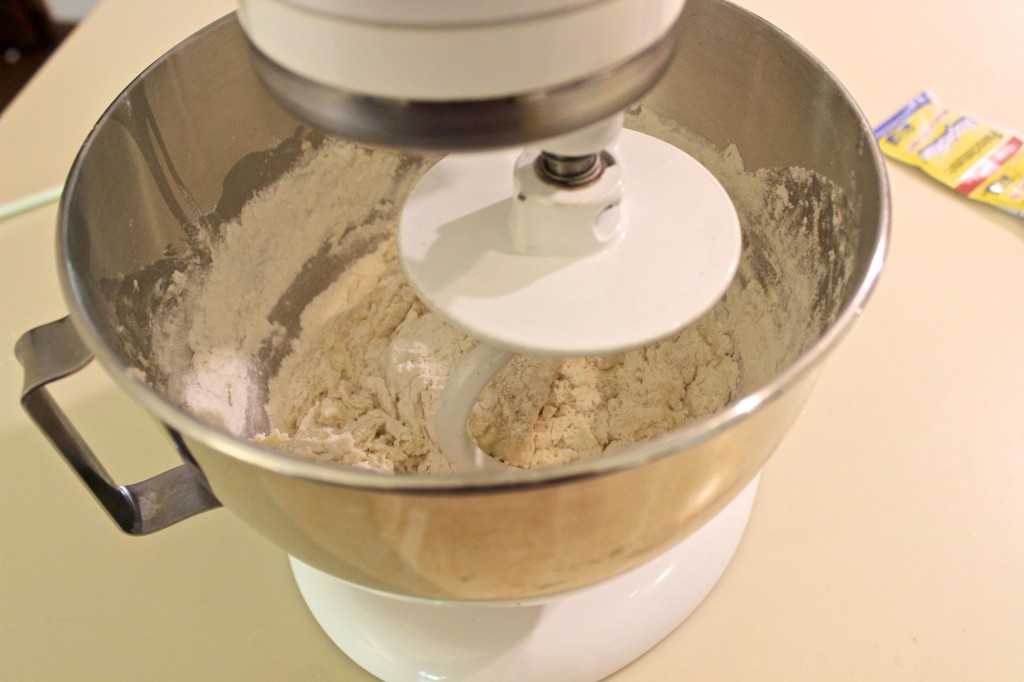
Photo by Katherine Baker
2. Add salt, sugar, milk, melted butter, vanilla, and egg to the yeast mixture and wisk.
Gradually add flour, and mix until combined.

Photo by Katherine Baker
3. If you’re lucky enough to have a Kitchenaid mixer, attach the dough hook and knead on a low speed for approximately 3 minutes, or until it because a soft, still ball. If you do not have a mixer, flour a work surface and knead by hand for approximately 10-12 minutes, or until dough becomes a soft sticky ball.
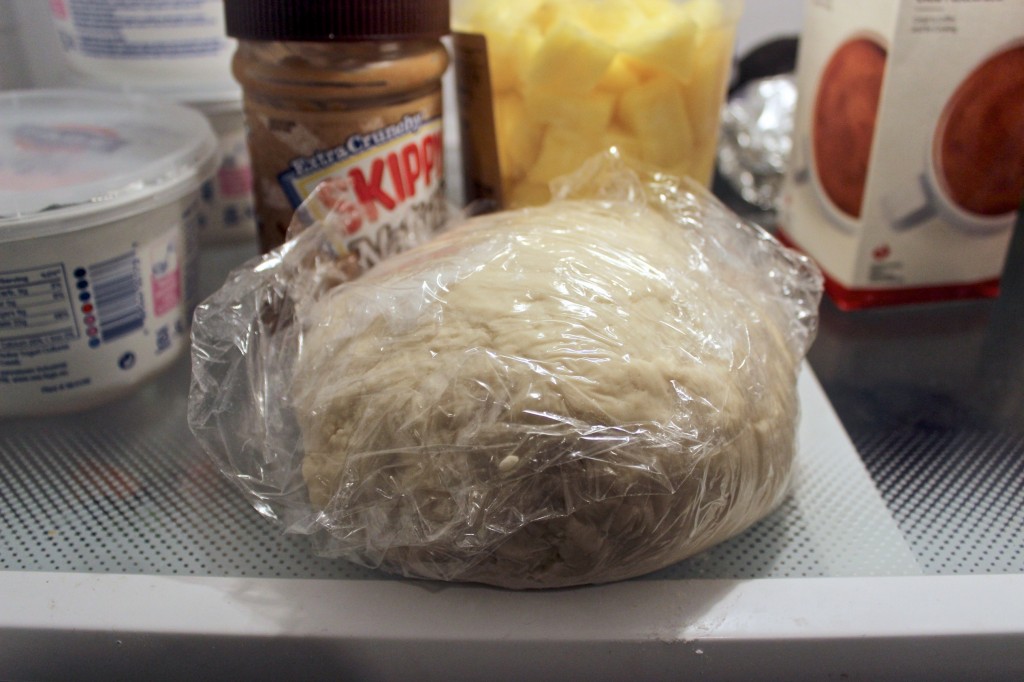
Photo by Katherine Baker
4. Wrap ball in plastic and refrigerate for 20-30 minutes.
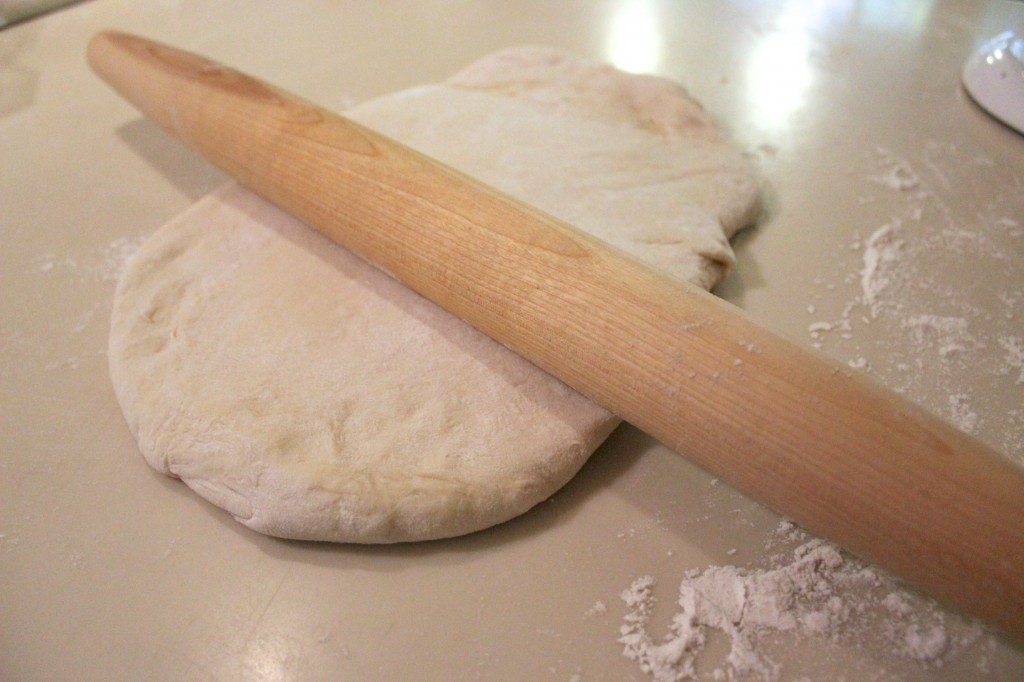
Photo by Katherine Baker
5. Remove the dough from refrigerator and return it to the floured surface. Roll dough into a 18 x 9 inch rectangle. Dough should be about 1/4 inch thick. Use a measuring stick for reference if needed.
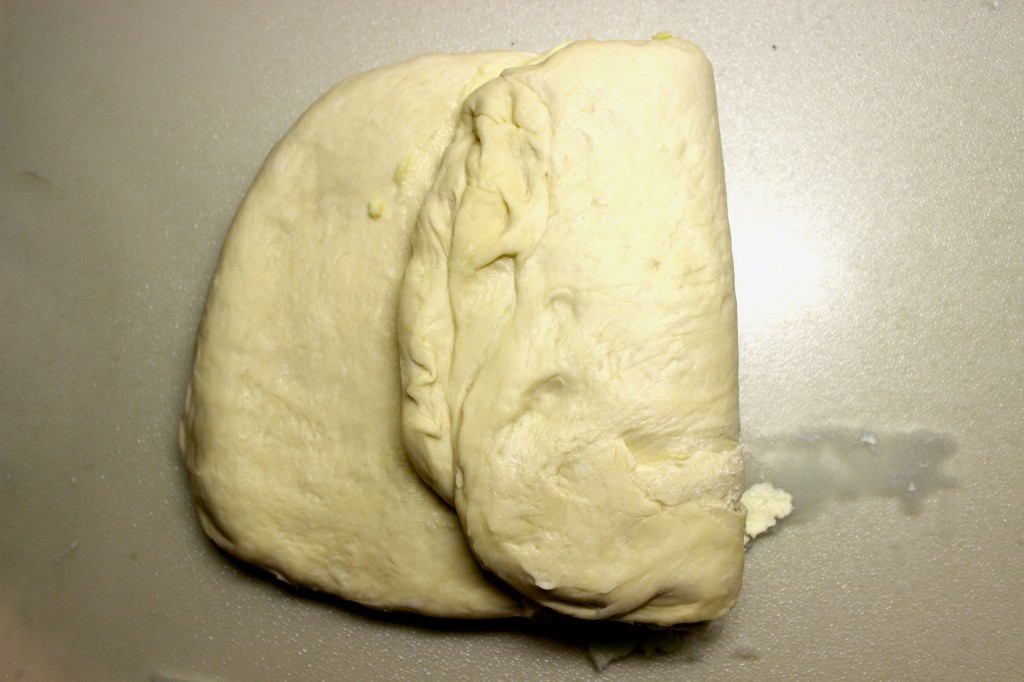
Photo by Katherine Baker
6. Spread 6 tablespoons of the softened butter on the middle third of the dough. Fold the bottom unbuttered third over the buttered middle third, then fold the top unbuttered third over that. Press lightly.
7. Transfer dough on a sheet pan and cover with plastic wrap and a kitchen towel.
8. Refrigerate 20-30 minutes until butter is firm. Sprinkle with flour as needed.
9.Remove dough from refrigerator and return to floured surface. Roll to an 8×14 rectangle about 1/2 inch thick. Again, butter the middle third of dough and repeat folding process as before.
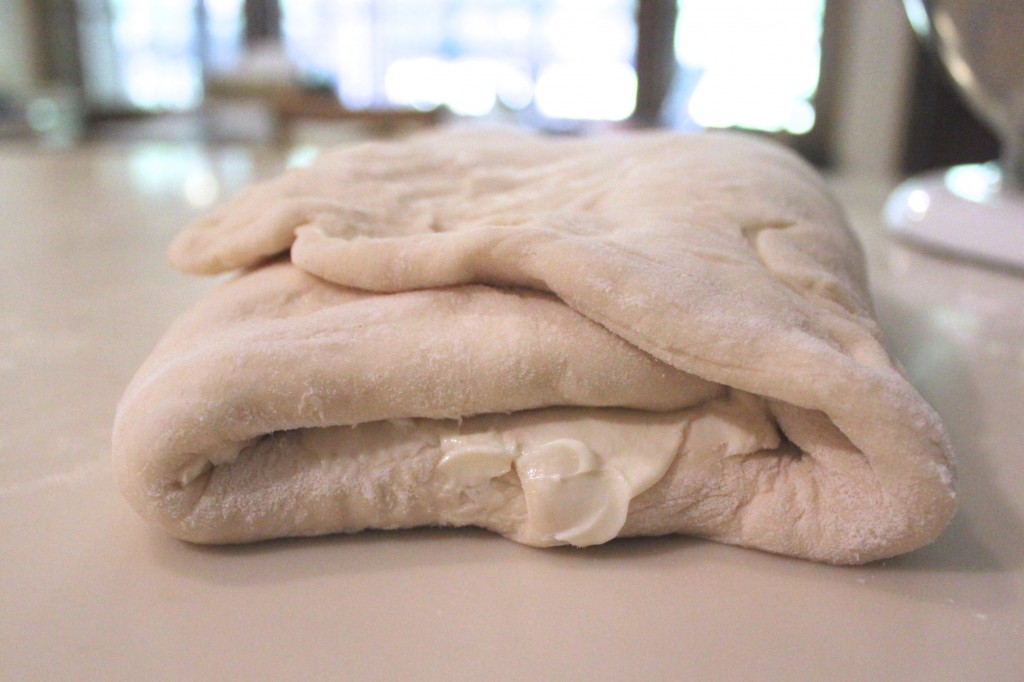
Photo by Katherine Baker
10. Repeat step 9. Yes, it is time consuming, but you are creating layers of deliciousness. Return to baking sheet, cover with plastic wrap and towel, and refrigerate for 2 hours.
After 2 hours, roll the dough into a rectangle, 3/8 inch thick.
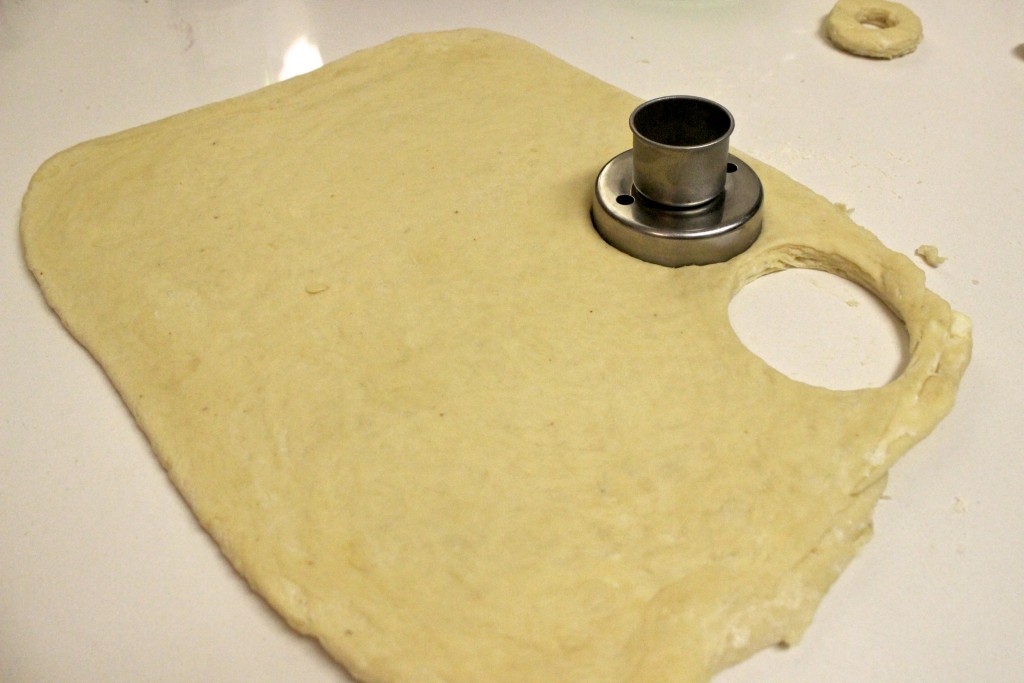
Photo by Katherine Baker
11. Use a donut cutter with a 1-inch center cutter to cut circles of dough. If you do not have a donut cutter, use a drinking glass approximately 3-4 inches in diameter, and then make the centers of the doughnuts using a shot glass.
12. Place cronuts and holes (why waste them!) on a baking sheet lined with wax paper and sprinkle lightly with flour. Allow them to rise in a warm place until they have doubled in size, at least one hour.
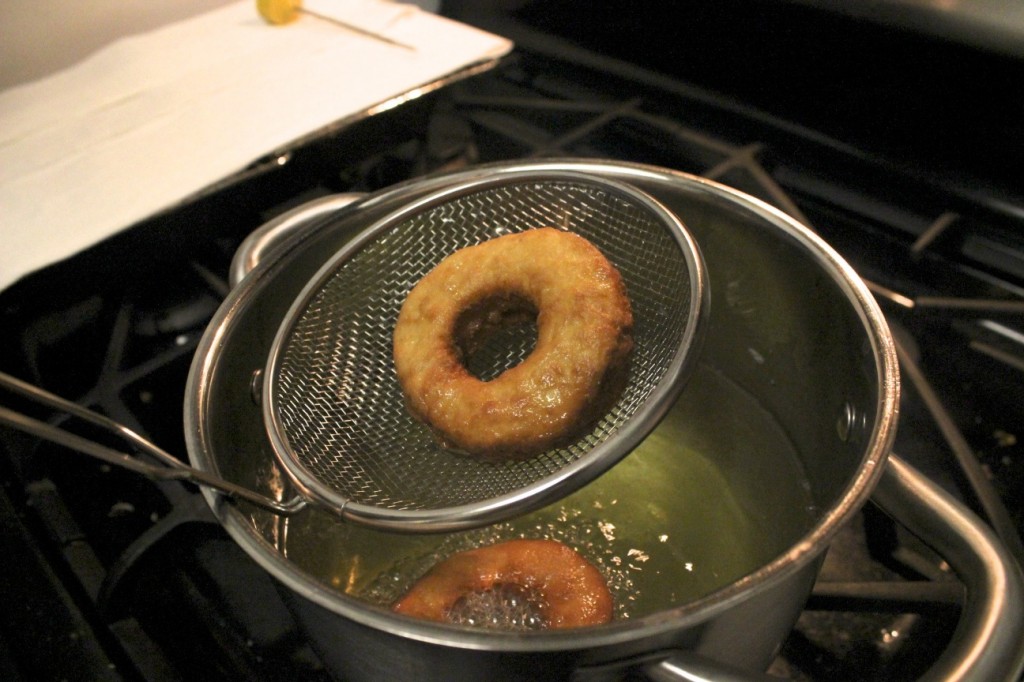
Photo by Katherine Baker
13. Heat vegetable oil in a deep saucepan over medium heat to 350 degrees. You will need a meat thermometer to verify this temperature.
14. Gently drop a cronut into the oil and fry until golden brown, 1-2 minutes. Fry up to 2 at a time but do not overcrowd the pan or you will have soggy and unevenly cooked cronuts. The cronuts will puff as they fry; flip halfway through cooking.
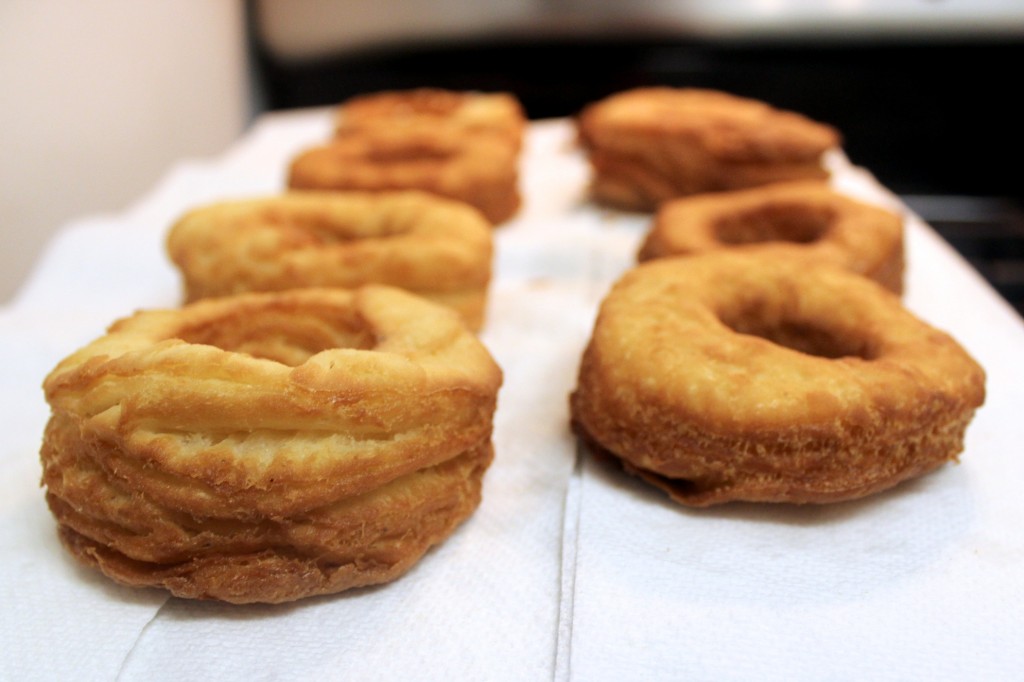
Photo by Katherine Baker
15. Using a large metal slotted spoon, large slotted wooden spoon, or a metal wooden strainer, remove cronuts and place on paper towels. Pat excess oil off immediately.
For the Glaze:
1. Place confectioners sugar in a medium bowl and stir in liquid gradually. Adjustments may be necessary to achieve desired consistency. If glaze is too runny, increase powdered sugar; if glaze is too thick, add liquid.
*Note: ambitious cooks can also make fresh custard in lieu of, or in addition to, the glaze.
Assembly:
1. Using a pastry bag or plastic bag with a corner cut off, inject Cronuts with custard from the bottom side of the cronut, or simply decorate with the custard ring to mimic original Cronuts. If you do not have a pastry bag, simply drizzle over the Cronuts with a spoon.
2. Garnish with cinnamon sugar, dried or fresh fruit, or candies.
3. Place Cronut in mouth. Bite down. Go to heaven. Serve whatever remaining cronuts you do not personally devour immediately.


